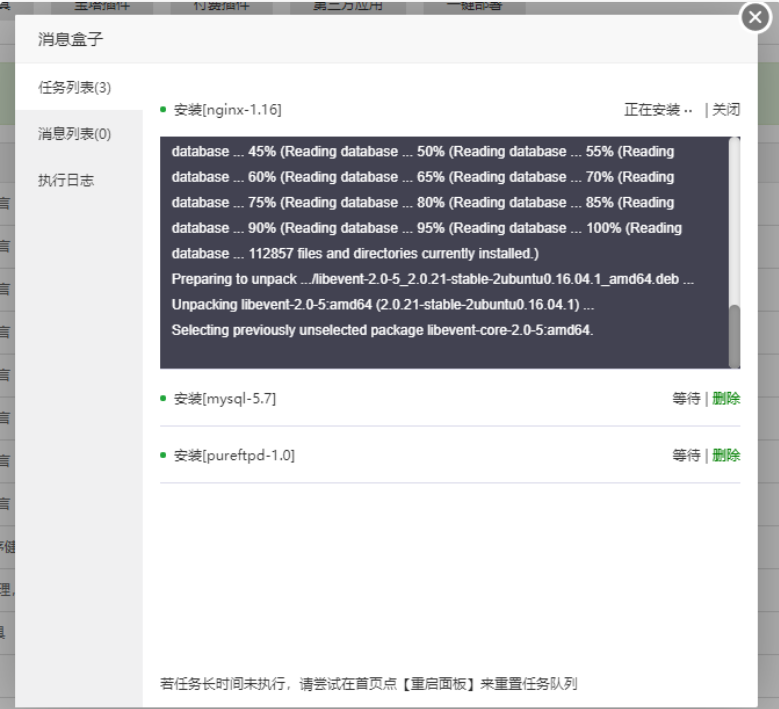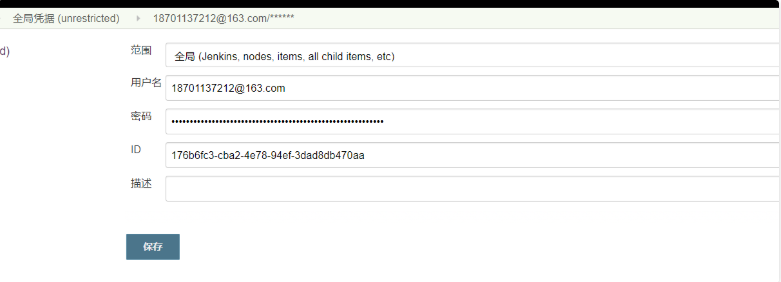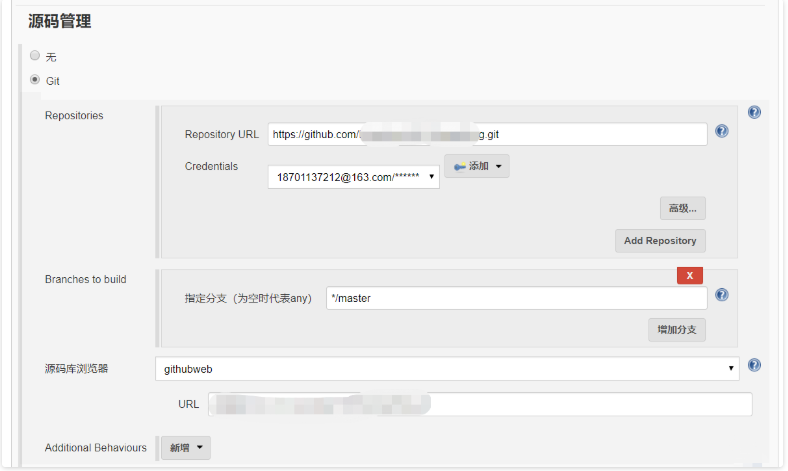1.阿里云购买ubuntu服务器;
2.xshell链接,root默认登录;
3.adduser xxx 创建使用帐号,并添加sudo权限;
sudo usermod -a -G adm lixiaofeng sudo usermod -a -G sudo lixiaofeng 编辑/etc/sudoers,增加 lixiaofeng all=(ALL:all) ALL 强制保存并退出;
4.修改默认python版本
sudo update-alternatives --install /usr/bin/python python /usr/bin/python2 100
sudo update-alternatives --install /usr/bin/python python /usr/bin/python3 150
5.安装pip
sudo apt-get install pip
6.安装宝塔
# 安装 gcc sudo apt-get build-dep gcc # 安装 psutil sudo pip3 install psutil wget -O install.sh http://download.bt.cn/install/install-ubuntu_6.0.sh && sudo bash install.sh



7.安装虚拟环境
sudo pip install virtualenv sudo pip install virtualenvwrapper mkdir ~/.virtualenvs vim ~/.bashrc # 末尾添加 export WORKON_HOME=$HOME/.virtualenvs source /usr/local/bin/virtualenvwrapper.sh source .bashrc # 创建虚拟环境 mkvirtualenv --python=/usr/bin/python3 py
8.安装redis
sudo apt-get install tcl tar -xvzf redis-3.0.4.tar.gz sudo mkdir /usr/local/redis sudo mv redis-3.0.4/* /usr/local/redis/ cd /usr/local/redis/ sudo make sudo make test sudo make install sudo mkdir /etc/redis sudo mkdir /var/lib/redis cd /usr/local/redis/utils/ sudo ./install_server.sh 回车即可 sudo vim /etc/redis/6379.conf 62行 bind 0.0.0.0 481行 requirepass sunck ps ajx | grep redis sudo kill -9 6555 sudo redis-server /etc/redis/6379.conf sudo vim /etc/init.d/redis ----------start #!/bin/sh # chkconfig: 2345 10 90 # description: Start and Stop redis ### BEGIN INIT INFO # Provides: OSSEC HIDS # Required-Start: $network $remote_fs $syslog $time # Required-Stop: # Default-Start: 2 3 4 5 # Default-Stop: 0 1 6 # Short-Description: OSSEC HIDS ### END INIT INFO PATH=/usr/local/bin REDISPORT=6379 EXEC=/usr/local/bin/redis-server REDIS_CLI=/usr/local/bin/redis-cli PIDFILE=/var/run/redis.pid CONF="/etc/redis/6379.conf" case "$1" in start) if [ ?f $PIDFILE ] then echo "$PIDFILE exists, process is already running or crashed." else echo "Starting Redis server..." $EXEC $CONF fi if ["$?"="0"] then echo "Redis is running..." fi ;; stop) if [! -f $PIDFILE] then echo "$PIDFILE exists,process is not running." else PID=$(cat $PIDFILE) echo "Stopping..." $REDIS_CLI -p $REDISPORT SHUTDOWN while [-x $PIDFILE] do echo "Waiting for Redis to shutdown..." sleep 1 done echo "Redis stopped" fi ;; restart|force-reload) ${0} stop ${0} start ;; *) echo "Usage: /etc/init.d/redis {start|stop|restart|fore-reload}" exit 1 esac ---------end sudo chmod +x /etc/init.d/redis 增加可执行权限 sudo update-rc.d -f redis defaults 设置开机启动
9.安装memcached; django默认缓存;
sudo apt-get install memcached
sudo apt-get install libevent-dev
10.安装mysqlclient失败
sudo apt install libmysqlclient-dev
pip install mysqlclient
11.安装jenkins
sudo apt-get install openjdk-8-jdk wget -q -O - https://pkg.jenkins.io/debian/jenkins.io.key | sudo apt-key add - sudo sh -c 'echo deb https://pkg.jenkins.io/debian-stable binary/ > /etc/apt/sources.list.d/jenkins.list' sudo apt-get update sudo apt-get install jenkins
等待安装完成,设置登录用户
安装插件 git、GitHub、python
配置凭据 设置Secret text




创建任务,设置构建后要执行的shell和python 代码;

12.拉下来代码后,使用 Gunicorn 启动 django 服务; gunicorn -b 0.0.0.:9000 -D -w 3 DjangoBlog.wsgi
13.配置宝塔 nginx配置
# user www www; worker_processes 4; #error_log /www/wwwlogs/nginx_error.log crit; pid /www/server/nginx/logs/nginx.pid; worker_rlimit_nofile 51200; events { use epoll; worker_connections 51200; multi_accept on; } http { include mime.types; #include luawaf.conf; include proxy.conf; default_type application/octet-stream; server_names_hash_bucket_size 512; client_header_buffer_size 32k; large_client_header_buffers 4 32k; client_max_body_size 50m; sendfile on; tcp_nopush on; keepalive_timeout 60; tcp_nodelay on; fastcgi_connect_timeout 300; fastcgi_send_timeout 300; fastcgi_read_timeout 300; fastcgi_buffer_size 64k; fastcgi_buffers 4 64k; fastcgi_busy_buffers_size 128k; fastcgi_temp_file_write_size 256k; fastcgi_intercept_errors on; gzip on; gzip_min_length 1k; gzip_buffers 4 16k; gzip_http_version 1.1; gzip_comp_level 2; gzip_types text/plain application/javascript application/x-javascript text/javascript text/css application/xml; gzip_vary on; gzip_proxied expired no-cache no-store private auth; # gzip_disable "MSIE [1-6]."; gzip_disable "msie6"; limit_conn_zone $binary_remote_addr zone=perip:10m; limit_conn_zone $server_name zone=perserver:10m; # server_tokens off; # access_log off; upstream myApp { server 127.0.0.1:9000; server 127.0.0.1:9001; } server { listen 80; server_name 129.28.187.64; index index.html index.htm index.php; # root /www/server/phpmyadmin; charset utf-8; #error_page 404 /404.html; include enable-php.conf; access_log /www/wwwlogs/access.log; error_log /www/wwwlogs/error.log; location = /favicon.ico { empty_gif; access_log off; } location /media/ { root /www/wwwroot/server/DjangoBlog/; expires 30d; access_log off; } location /static/ { alias /www/static/static/; } location / { root html; index index.html index.htm; proxy_set_header X-Forwarded-For $proxy_add_x_forwarded_for; proxy_connect_timeout 300s; proxy_send_timeout 300s; proxy_read_timeout 300s; proxy_redirect off; proxy_pass http://myApp; } } include /www/server/panel/vhost/nginx/*.conf; }
网站配置<同nginx>
创建数据库
完成~~~








